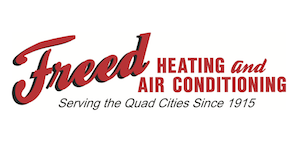It’s always nice when we manage to save money on our utility bills, but you should know there’s a way to keep costs down, even when you’re out of the house.
The secret is your thermostat. By using automatic schedules, you can tailor the temperature to your needs. That means you can have different temperature settings for when you’re home, away or even when you’re sleeping.
By trying a few of these schedules, you’ll be able to enjoy comfortable temperatures while cutting down your energy bills. Here are some ways your thermostat doesn’t have to use up all your summer spending money:
While at Home
Whenever you’re at home, you want comfortable temperatures. That’s why it’s best to set your thermostat lower in the summer while you are in the house to appreciate the cool air.
But in terms of energy efficiency, the best range for the summer is actually around 78 and 80 degrees Fahrenheit. This way, you’ll keep cool while still keeping your energy bills low.
While Away
When setting the temperature for a vacation or other trip away from the house, it’s advantageous to set the thermostat higher than normal.
If your home is located somewhere a little cooler, you can set the temperature as high as 88 degrees while no one is home before lowering it back to the sweet spot of 78-80 degrees once you’re home again. This way, your air conditioning won’t have to work constantly to provide cooling for a bunch of empty rooms.
While Sleeping
For a full night’s rest during summer weather, you want a nice cool temperature. A good rule of thumb is between 68-72 degrees Fahrenheit. This will keep you from getting too hot or too cold when you are trying to get some rest.
Other Strategies for Lowering Energy Use:
- Smart thermostat installation: Trying a smart thermostat in the summer is an excellent way to reduce energy costs by automatically adjusting to your lifestyle and personal preferences. A smart thermostat manages the temperature if you are home or sleeping, while allowing it to get a little warmer when no one is around. With reliable brands like the Lennox iComfort, you have the ability to remotely access and change the temperature through your smartphone, tablet or laptop. Planning smart thermostat installation in your Moline home is an effortless way to set the correct temperature even when you aren’t home.
- Update your existing HVAC system: A high-efficiency HVAC system is another great option for long-term energy savings. If a system boasts high energy efficiency, your utility bills will be lower because it requires less energy to achieve comfortable temperatures. Air conditioning installation in Moline is a great way to beat the heat in the summer.
- Stay on top of routine AC maintenance: Investing in or ignoring regular air conditioning maintenance in Moline can have a significant impact on your utility bills. With regular cleaning of the coils, checking for damage and keeping vents clear of dust and debris, this can help your HVAC system perform better during day-to-day use.. Higher energy efficiency will also reduce strain on important or delicate components and lowers operational costs, lowering total energy use and eventually the total monthly bill.
- Clean or replace the air filter on a regular basis: Cleaning or replacing the air filter regularly saves money by helping air flow efficiently through your air conditioner. When filters are clogged with dirt and debris, air conditioners have to work harder, and the added strain may impact the system’s life span and result in breakdowns.
- Confirm your attic is sufficiently insulated: Insulation is one of the key components in any energy-efficient home, securing the hot air outside and the cool air inside over the summer. The North American Insulation Manufacturers Association (NAIMA) recommends that homes in the southern United States should have at least 13-14 inches of insulation, while those in northern U.S. states should have 16-18 inches.
- Inspect your air ducts: A leak in the air ducts could increase your energy bills much more than 20 percent, plus it can affect equipment such as your water heater, clothes dryer and other appliances throughout your home. Watching for signs of leaks and sealing them can help with both these issues.
- Seal all other leaky spots in your home: Sealing leaky spots in your home with caulk, foam sealant or weather-stripping keeps temperatures a little cooler on hot summer days. You should also check for any gaps around windows, doors and even outdoor fixtures. Taking the time to seal up any leaks now can help you save a lot over time.
